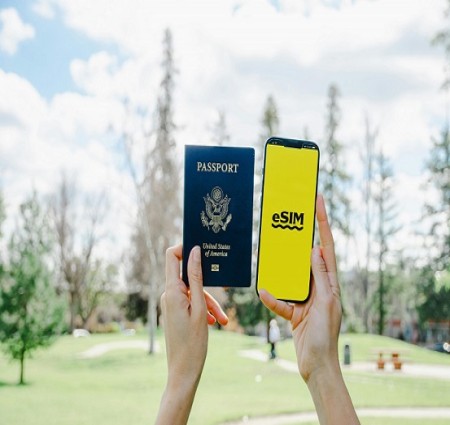Blog by arkviews | Digital Diary
" To Present local Business identity in front of global market"
" To Present local Business identity in front of global market"
 Digital Diary Submit Post
Digital Diary Submit Post
 When preparing for an international trip, staying connected is a top priority for most travellers. Whether it's for navigation, staying in touch with loved ones, or keeping up with work, reliable internet access is essential. But with the rise of travel eSIM technology, travellers now have more options than ever for mobile connectivity. If you're wondering whether to stick with your tradition...
Read More
When preparing for an international trip, staying connected is a top priority for most travellers. Whether it's for navigation, staying in touch with loved ones, or keeping up with work, reliable internet access is essential. But with the rise of travel eSIM technology, travellers now have more options than ever for mobile connectivity. If you're wondering whether to stick with your tradition...
Read More
When preparing for an international trip, staying connected is a top priority for most travellers. Whether it's for navigation, staying in touch with loved ones, or keeping up with work, reliable internet access is essential. But with the rise of travel eSIM technology, travellers now have more options than ever for mobile connectivity.
If you're wondering whether to stick with your traditional SIM card or switch to an eSIM for your next trip, this article will help you understand the key differences and what you need to know before making a decision.
A SIM card (Subscriber Identity Module) is a small physical card that you insert into your phone to connect to a mobile network. It stores information like your phone number, network settings, and personal data. Traditional SIM cards have been the standard for decades and are widely used around the world.
There are three main types of SIM cards:
An eSIM (embedded SIM) is a digital SIM card that's built directly into your device. Unlike traditional SIM cards, an eSIM doesn't require a physical card swap. Instead, it's activated digitally, allowing you to switch carriers and plans without inserting or removing anything.
With an eSIM, you can download and activate a mobile network plan via a QR code or an app. Your phone can store multiple eSIM profiles, so you can easily switch between different networks as needed.
When deciding between an eSIM and a traditional SIM card for your trip abroad, here are the key differences to consider:
If you're planning to stay in one country for an extended period, purchasing a local SIM card may be the more cost-effective option. SIM cards are easy to find and use, and local carrier plans often offer competitive rates for data, calls, and texts. However, if you plan on visiting multiple countries or don't want to deal with the hassle of finding a new SIM card at each destination, an eSIM might be the better choice.
SIM cards are best for:
For travellers who plan to visit multiple countries, want the convenience of instant activation, and prefer to avoid the hassle of swapping physical SIM cards, an eSIM is the way to go. With global coverage, no physical card to worry about, and the ability to switch between carriers effortlessly, eSIMs are ideal for frequent travellers.
eSIMs are best for:
If you've decided that eSIM is the right choice for your next trip, here's how to get started:
Check Device Compatibility: Make sure your smartphone supports eSIM. Most modern smartphones, such as the iPhone 14, Google Pixel 6, and Samsung Galaxy S21, are eSIM-compatible.
Choose a Provider: Popular eSIM providers include Orange Holiday eSIM. These provider offers a range of regional and global plans tailored to travellers.
Purchase and Activate: Buy your eSIM plan online. You'll receive a QR code that you can scan with your phone to activate the eSIM profile.
Manage Your Data: Use your eSIM provider's app to monitor data usage, switch between plans, or top up your balance.
Both SIM cards and travel eSIM have their own advantages and drawbacks, depending on your travel needs. While SIM cards are cost-effective and widely available, eSIM technology offers unparalleled convenience and flexibility for travellers visiting multiple countries. Ultimately, your decision should be based on factors like your destination, budget, and device compatibility.
As travel becomes more digital, eSIMs are quickly becoming the preferred choice for staying connected abroad. Whether you're embarking on a European adventure or hopping between continents, eSIM ensures you stay connected without the hassle of physical SIM cards.
Read Full Blog...